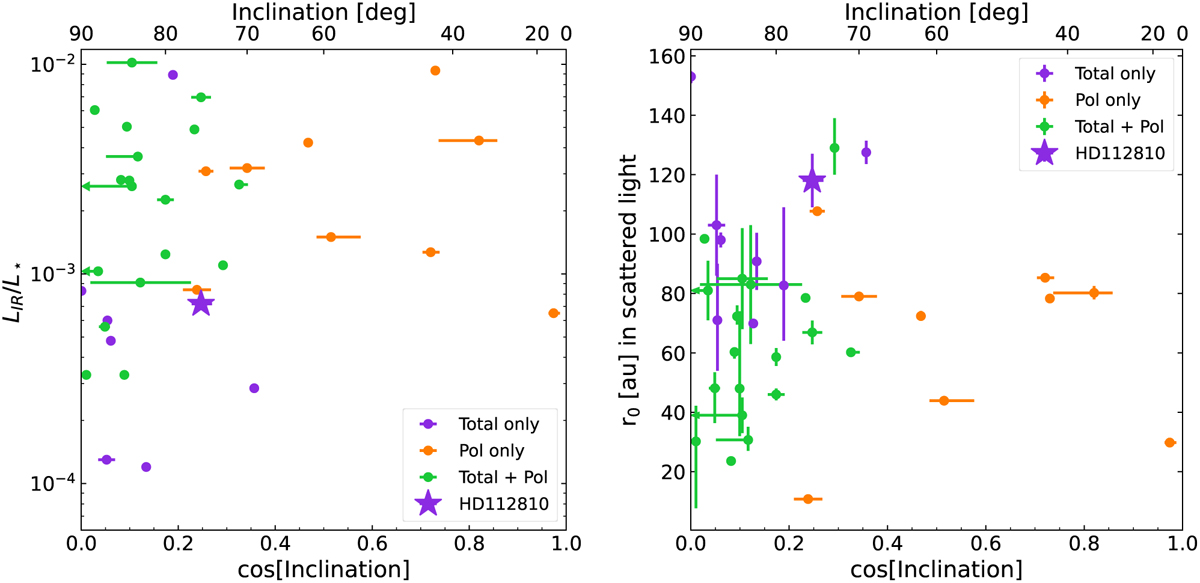Fig. 6

Download original image
Parameter space of the sample of debris disks. Here we show the HD 112810 debris disk (indicated with apurple star) compared to the sample of debris disks that have previously been imaged from the ground. Disks are color coded based on detection method: orange for polarized light only, purple for total intensity only, and green for detection in both polarized and total intensity. Left: fractional IR excess and on-sky inclination of disks; HD 112810 stands out as one of the least inclined disks imaged in total intensity. Right: modeled peak dust density (r0) and on-sky inclination of disks; in this case HD 112810 stands out as one of the largest disks to be imaged in scattered light, and is strikingly similar in geometry to HD131835, as well as the slightly larger disks surrounding HD141011 and 49 Ceti. Literature disk properties are from the ensemble of objects presented in Esposito et al. (2020) and from individual detections presented in Choquet et al. (2017); Bonnefoy et al. (2017, 2021); Sissa et al. (2018); Perrot et al. (2019, 2023); Hinkley et al. (2021); Lawson et al. (2021); Marshall et al. (2023).
Current usage metrics show cumulative count of Article Views (full-text article views including HTML views, PDF and ePub downloads, according to the available data) and Abstracts Views on Vision4Press platform.
Data correspond to usage on the plateform after 2015. The current usage metrics is available 48-96 hours after online publication and is updated daily on week days.
Initial download of the metrics may take a while.


